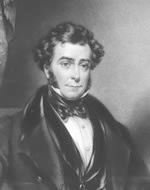

The first point to remark on is the fact that the ships were not as a rule owned by the East India Company. They were "taken up" for one voyage or more - that is to say, they were chartered from private owners.
A private owner was called a "ship's husband," and an "India husband" was the term applied to a man who chartered ships to the Hon. East India Company (H.E.I.C.), which ships were specially built for the East India trade and conformed in every particular of design and building material to the rules and regulations laid down by the company. An India husband was usually a very rich man and a large shareholder in the East India Company itself. The East India Company was a monopoly in the hands of a few men, and an outsider had little chance of getting inside the ring.

In writing of the old-time shipowners, one cannot help being struck by the way in which personalities rather than companies swayed the destinies of British shipping. No doubt this is always the case, but in those days the personality was not so hidden from the public eye - hidden amongst the names of a full board of directors.
These old shipowners ruled their firms like autocrats, and built up the great British Mercantile Marine of the present day just as the great Empire builders built up the British Empire. Amongst such owners we find the names of (George) Green, (Thomas) Smith, (Robert) Wigram, Joseph Somes, Duncan Dunbar, James Baines, Wilson, (John) Willis, Thompson and Anderson looming up head and shoulders above their fellows just as amongst the Empire builders we find those of Clive, Raffles and Rhodes.
With the demise of the Old John Company, these men found their opportunity and amongst the first to sieze this opportunity was Joseph Somes. Joseph Somes began his career as an India husband. But with his enterprise it was not long before he had ships trading to every part of the world. Some of his earliest ships, such as the Perseverance, 423 tons, built at Quebec in 1801, were South Sea whalers; others were West Indiamen; and he was also well known for the number of his ships taken up for various purposes by the Government. Many of his ships were hired for the transport of convicts, and Lieut. Coates gives a list of rates paid to him for the years 1840 and 1841 in this gruesome traffic, viz.:
| Maitland | 648 tons | £5. 0. 0 |
Per ton per voyage |
| Asia | 536 tons | £5. 9. 0 |
Per ton per voyage |
| Eden | 522 tons | £5.13. 9 |
Per ton per voyage |
| Lord Lyndoch | 638 tons | £5.14. 0 |
Per ton per voyage |
| Mary Ann | 394 tons | £6. 4. 4 |
Per ton per voyage |
| Mexborough | 376 tons | £6. 6. 0 |
Per ton per voyage |
His house-flag, which only differed from the White Ensign having an anchor instead of the Union Jack in the canton, is supposed to have been granted to him as a reward for his many services to the Government in time of need. When the H.E.I.C. (Hon. East India Company) sold its fleet, Joseph Somes bought some of its finest ships such as the Earl of Balcarres, Thomas Coutts, Abercrombie Robinson, Lowther Castle, George the Fourth and Java.
Joseph Somes was one of the promoters of Lloyd's Register. In his old age he was partnered by his sons, and the firm at his death disguised itself under the name of the Merchant Shipping Company.
